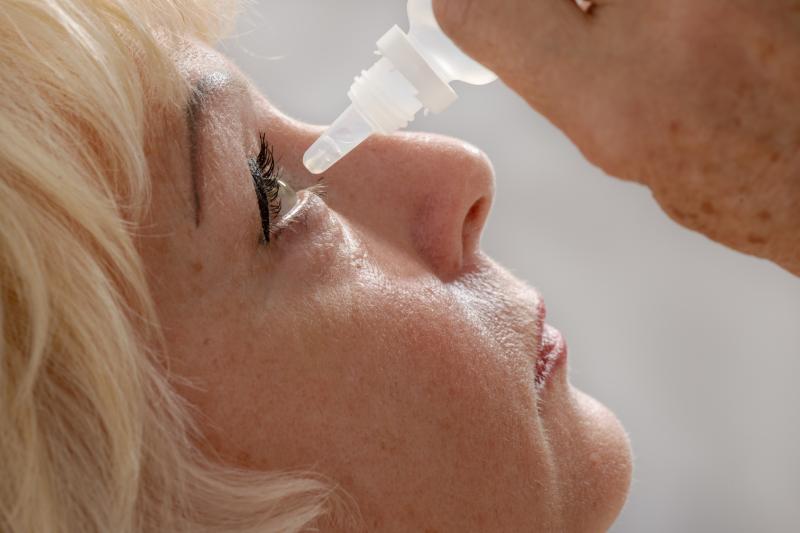
A triple fixed combination (TFC) of bimatoprost 0.01%/brimonidine 0.15%/timolol 0.5% ophthalmic solution provides superior intraocular pressure (IOP)-lowering effects compared with a dual fixed combination (DFC) of brimonidine 0.2%/timolol 0.5% in patients with primary open-angle glaucoma (POAG) or ocular hypertension (OHT), according to the results of a phase III study.
“An acceptable tolerability profile was observed through 12 months of use of TFC, offering an effective therapeutic option in patients with POAG or OHT who require multiple medications to control their IOP,” the investigators said.
The analysis included 185 patients who had been randomized to receive TFC (n=90) or DFC (n=95) twice daily in each eye for 3 months. All patients had a baseline IOP of 23–34 mm Hg in both eyes. Treatment was prolonged for up to 12 months in those who chose to do so.
At week 12, results for the primary efficacy outcome of change from baseline in mean IOP in the worse eye favoured TFC (difference vs DFC, ─2.17 mm Hg, 95 percent confidence interval [CI], ─3.12 to ─1.22), with TFC demonstrating superiority over DFC at every visit (weeks 1, 2, 4, 8 and 12; p<0.001). [Clin Ther 2020;42:263-275]
Treatment-related adverse events (AEs) occurred with greater frequency in the TFC than in the DFC arm (72.2 percent vs 53.7 percent; p=0.009), especially conjunctival hyperaemia (47.8 percent vs 23.2 percent; p<0.001), consistent with the additional presence of bimatoprost in TFC. However, these events were mostly mild, and none were serious. There was no significant between-group difference observed in the number of treatment discontinuations at week 12 (12.2 percent vs 7.4 percent; p=0.266).
Similar results were obtained from the 12-month masked-extension safety data. The percentage of patients with treatment-related AEs were markedly higher with TFC than with DFC (82.2 percent vs 65.3 percent; p=0.009).
“The thee active ingredients in TFC are known to reduce IOP via complementary mechanisms of action, and the current fixed combination requires the administration of only one drop from the same bottle of ophthalmic solution twice per day,” the investigators said.
In comparison, the same regimen of bimatoprost, brimonidine and timolol used as concurrent monotherapies requires up to six administrations of drops from three different bottles per day, and three or more administrations from multiple bottles per day if DFCs are available, they added.
Therefore, the efficacy and safety of TFC reported in the current trial hold clinical relevance, given that the need for using multiple bottles of different medications per day increases treatment burden for glaucoma patients and that up to 80 percent of them may struggle with adherence to their medication regimen because of the inconvenience associated with multiple eye drop instillation, among other factors, the investigators pointed out. [Optom Vis Sci 2013;90:883-897; Ophthalmology 2015;122:1308-1316; BMC Ophthalmol 2010;10:1]
“The effectiveness of fixed-combination products such as once-daily TFC should not, however, undermine the importance of adherence, and clinicians should counsel their patients regularly on the merit of using their medications as prescribed,” they added.